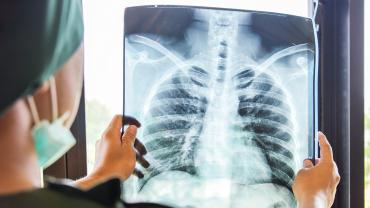
In a recently published population-based, retrospective analysis in the American Journal of Nutrition, researchers explored if there was a possible link between the reported disease outcome of those with SARS-COV-2 and selenium levels in China.
Selenium is a trace mineral that is a nutritionally-essential component of dozens of selenoproteins in humans that play crucial roles in thyroid function, reproduction, DNA synthesis, regulating reactive oxygen species and redox status, and, more relevantly, in responding to infections, thus supporting immune health and inflammation. According to NHANES, selenium deficiency in the US and Canada is rare and most Americans consume adequate amounts, but that’s not the case in other parts of the world.
According to the article, “there is a belt of selenium deficiency running from northeast to southwest in the country...China has populations that have both the lowest and the highest selenium status in the world,” which is what led researchers to investigate possible associations between selenium status and recovery or death rates of confirmed SARS-COV-2 cases in the country. Previous studies published in the 1990s discovered that selenium deficiencies increased the pathogenicity and virulence of RNA viruses, including influenza, human immunodeficiency virus 1 (HIV-1), Keshan disease, and poliovirus. In populations with HIV-1, selenium status was inversely correlated with the progression of the virus to AIDS and mortality rates; selenium increases endogenous antioxidant levels which helps inhibit HIV-1 replication. Selenium supplementation was also found to be protective against H1N1 infections in a mouse model where 75% of mice fed a high selenium diet survived compared to 25% fed a low selenium diet partially due to the increase of antiviral cytokines. Antiviral cytokines, including TNF-? and IFN-?, help improve resistance to infection, suggesting a higher intake of selenium may be beneficial to fight active infections. Due to this trace mineral’s influence on inflammation and immunoregulation, the researcher’s hypothesis seems highly plausible.
Selenium’s antiviral properties shown in previous studies were consistent with researchers’ results: there was a significant link between the reported recovery rates (which were defined as significantly improved respiratory symptoms, reduced lung inflammation, and negative respiratory pathogen nucleic acid testing) for SARS-COV-2 and patients’ selenium status. After analyzing the data from Chinese provinces and municipalities with over 200 cases of SARS-COV-2 and cities with more than 40 cases, and the hair selenium levels of those populations, researchers discovered that regions with lower selenium levels were less likely to recover from the virus, such as in the Heilongjiang Province (among the lowest selenium intake in the world) which had a death rate five times higher than the average death rate of all the other provinces outside Hubei. On the other hand, the percentage of recovered patients in Enshi city, which has the highest selenium intake in the country, was nearly three times higher than all other cities in that province.
The richest dietary sources of selenium are Brazil nuts, organ meats, certain types of seafood, and muscle meats. The amount of selenium in the food chain varies depending on the geographical region and levels present in the soil. According to research, supplemental selenium (often found in multivitamin/multimineral supplements) – in its more bioavailable forms (e.g., selenomethionine and selenium glycinate) – may be necessary for immunocompromised individuals, including those living with HIV, those who do not eat a balanced diet rich in animal proteins, such as vegans and vegetarians, and those living in selenium-deficient regions. Although this correlation is compelling, more evidence is needed. Regardless, especially in light of the current health crisis, it is vitally important to consume a micronutrient-rich diet to support robust immune health and healthy inflammatory responses to combat potential infectious pathogens.
By Caitlin H. Higgins, MS, CNS, LDN